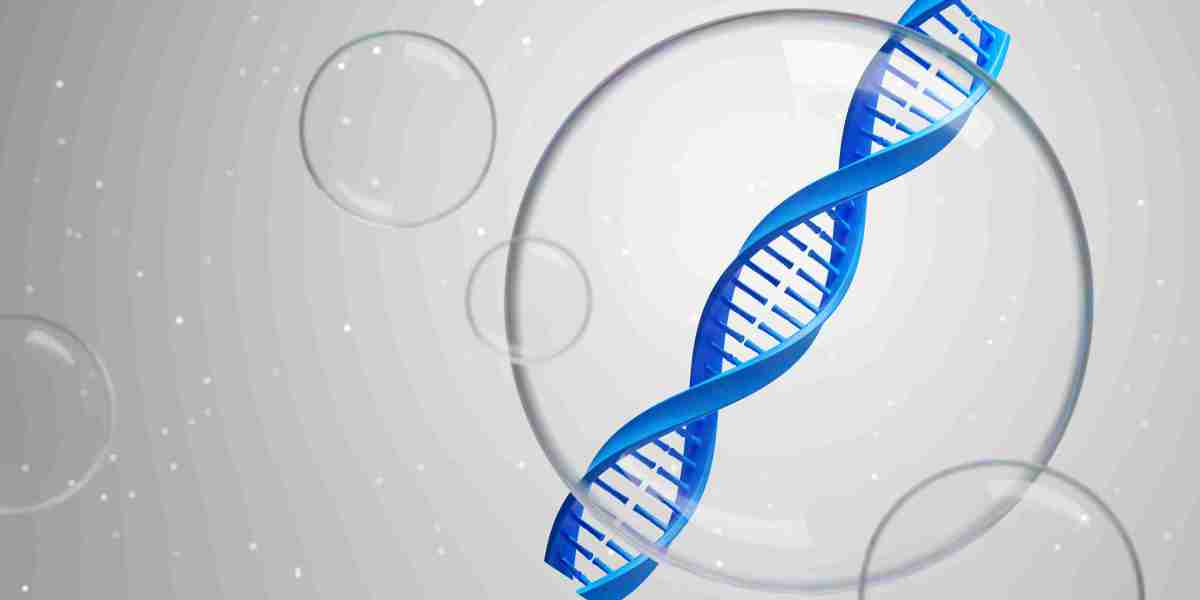DNA (Deoxyribonucleic Acid) and RNA (Ribonucleic Acid) are two of the most crucial molecules in biology, responsible for storing, transmitting, and expressing genetic information. Despite their similarities, DNA and RNA differ significantly in structure, function, and their roles within cells. Grasping the difference between DNA and RNA is essential for understanding how genetic information is managed within organisms and how molecular biology works at its core. In this blog, we will explore the key differences between these two vital molecules.
1. Structural Differences: Double-Stranded DNA vs. Single-Stranded RNA
The most obvious distinction between DNA and RNA lies in their structure:
DNA: DNA is a double-stranded molecule, forming a stable double helix. It consists of a backbone made up of deoxyribose sugar and phosphate groups, with nitrogenous bases—adenine (A), thymine (T), cytosine (C), and guanine (G)—that pair specifically: adenine with thymine and cytosine with guanine. The double-stranded structure of DNA provides stability, ensuring that the genetic information it carries remains intact over time.
RNA: RNA, on the other hand, is usually single-stranded. It contains ribose sugar instead of deoxyribose and uses uracil (U) in place of thymine. In RNA, adenine pairs with uracil, and like DNA, cytosine pairs with guanine. The single-stranded nature of RNA makes it more flexible, allowing it to take on various structures and functions depending on its type and role in the cell.
2. Function: The Blueprint of Life vs. The Messenger
Another fundamental difference between DNA and RNA is their functions within the cell:
DNA: DNA is the long-term storage system for genetic information. It contains all the instructions necessary for building and maintaining an organism. DNA is passed down from one generation to the next during reproduction, ensuring that genetic traits are inherited. Its primary role is to serve as the blueprint for the synthesis of proteins and to provide the information required for cellular function and development.
RNA: RNA, on the other hand, is involved in the expression of genetic information stored in DNA. While DNA holds the instructions, RNA plays a critical role in translating those instructions into functional proteins. The different types of RNA include:
- mRNA (Messenger RNA): This RNA molecule carries the genetic code from DNA to the ribosome, where it is used as a template for protein synthesis.
- tRNA (Transfer RNA): Helps in protein synthesis by bringing the appropriate amino acids to the ribosome.
- rRNA (Ribosomal RNA): Forms a part of the ribosome, where protein synthesis occurs.
3. Replication vs. Transcription: Copying DNA vs. Creating RNA
The processes by which DNA and RNA are generated further highlight their differences:
DNA Replication: DNA replication is the process by which a cell makes an exact copy of its DNA, ensuring that genetic information is accurately passed on to daughter cells during cell division. This process is essential for maintaining genetic stability and requires specialized enzymes like DNA polymerase to ensure the accuracy of the replication.
RNA Transcription: Transcription is the process by which RNA is synthesized from a DNA template. However, unlike DNA replication, transcription does not copy the entire DNA molecule. Instead, it only transcribes the specific genes that need to be expressed in the cell at any given time. The RNA produced during transcription acts as a messenger, conveying the genetic instructions from DNA to the ribosomes for protein synthesis.
4. Stability: Long-Term Storage vs. Temporary Use
Another key difference between DNA and RNA is their stability:
DNA: DNA is a stable molecule that is built for long-term storage. It remains intact throughout an organism's life and is passed on during reproduction, ensuring the inheritance of genetic traits. Its double-stranded structure and protective mechanisms make it highly stable and durable over time.
RNA: RNA is more transient and unstable compared to DNA. Once RNA has fulfilled its role—whether it's in protein synthesis or regulating gene expression—it is rapidly degraded. This short-lived nature allows cells to quickly adapt to environmental changes or signals and regulate gene expression dynamically.
5. Cellular Location: DNA in the Nucleus vs. RNA in the Cytoplasm
DNA and RNA also differ in where they are located and function within the cell:
DNA: In eukaryotic cells, DNA is primarily found in the nucleus, organized into chromosomes. A small amount of DNA is also found in mitochondria, where it controls mitochondrial functions. In prokaryotic cells, DNA is located in the cytoplasm in the form of a single, circular chromosome.
RNA: RNA is synthesized in the nucleus but primarily functions in the cytoplasm. Messenger RNA (mRNA) is transported from the nucleus to the ribosomes in the cytoplasm, where it directs the synthesis of proteins. Transfer RNA (tRNA) and ribosomal RNA (rRNA) also function in the cytoplasm, contributing to protein assembly.
6. Genetic Testing: DNA vs. RNA Analysis
Both DNA and RNA play critical roles in modern genetic testing:
DNA Testing: DNA testing is widely used for genetic diagnostics, identifying inherited conditions, and assessing genetic predispositions. By analyzing DNA, scientists can detect mutations or variations that might indicate susceptibility to diseases such as cancer, heart disease, or genetic disorders. DNA testing is also fundamental in areas like forensic science and ancestry research.
RNA Testing: RNA testing, particularly RNA sequencing, is used to analyze gene expression. This type of testing helps researchers understand how genes are regulated and how they contribute to cellular functions and disease processes. RNA sequencing can provide valuable insights into cancer, immune responses, and other diseases where gene expression plays a critical role.
Conclusion: Complementary Roles in Genetics
In conclusion, while DNA and RNA have some key differences in terms of structure, function, and stability, they are complementary molecules that work together to ensure the proper functioning of living organisms. DNA serves as the stable repository of genetic information, while RNA translates and expresses that information in a variety of ways, from protein synthesis to gene regulation.
The difference between DNA and RNA is crucial to understanding how genetic information is stored, copied, and used within cells. With advancements in genetic testing and biotechnology, the study of DNA and RNA continues to provide essential insights into health, disease, and the potential for personalized medicine. By exploring these molecules further, we gain a deeper understanding of the molecular machinery that drives life itself.













